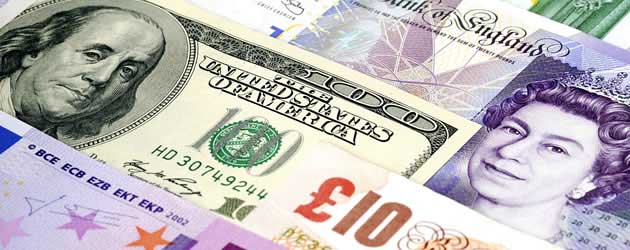
The Pound has been far-and-away the best performer in this week’s trading session due to a cascade of impressive domestic data releases and a statement from the Bank of England that was interpreted positively by financial markets. Second place goes to the Australian Dollar, which benefitted from a less-dovish-than-expected Reserve Bank of Australia policy statement, even though the RBA decided to cut the benchmark interest rate by 25 basis points. The ‘Aussie’ also garnered support among traders in response to a rather robust Chinese Trade Balance report.
Sterling commenced the week on the front-foot as a turbo-charged Service Sector print signalled to traders that the UK economy is firing on all cylinders. July’s Services PMI figure came in at a 6-year high of 60.2, adding to the sense of optimism created by the 2-year high Manufacturing print of 54.6 and the 3-year high Construction Industry score of 57.0.
The good news just kept on coming for the Pound as UK Industrial Production was reported to have increased by an inspiring 1.1% during June and UK Manufacturing Production was reported to have advanced by 1.9%. The optimistic data completed the best set of British Manufacturing indexes since 1992, showing that all 13 categories saw expansion during June.
On top of that Halifax announced that UK House Prices rallied by 4.6% in July – the most since August 2010 – and the British Retail Consortium reported that this July was the best since 2006 – with sales volumes accelerating 3.9%. A separate report showed that UK Car Sales increased by 12.7%.
Even during this waterfall of robust UK data releases the Pound’s gains were capped by fears that the Bank of England was about to administer Sterling a sucker-punch in the form of monetary easing forward guidance. However, the Pound had the last laugh: the BoE announced that interest rates would remain at the current record-low of 0.50% until Unemployment falls to 7.0%, but crucially the UK Central Bank retained the right to raise interest rates sooner if inflation remains above target or if other economic conditions necessitate tighter credit conditions. Essentially, the BoE gave markets forward guidance that an exit strategy is in place if the British economy continues to recover inline with recent results. Sterling traders were also cheered by the omission of any hints regarding further asset purchases.
In reaction to the extremely bullish releases this week the Pound is currently up by 2.5 cents against the US Dollar, 1.6 cents against the Canadian Dollar and 1.1 cents against the Euro.
The Australian Dollar came into the week in a bad way, as the majority of market-players were expectant of another rate cut from the Reserve Bank of Australia. The RBA obliged with a 25 basis point cut from 2.75% to 2.50%, however, the reduction was less severe than some investors had predicted – a 50 basis point cut was forecast by some traders – and the accompanying policy statement was a lot less negative than markets had anticipated. In recent months the RBA has repeatedly mentioned that “inflation provides scope for further easing”, but on this occasion the phrase was omitted, which led traders to the assumption that the latest rate cut could be the last for the foreseeable future.
The ‘Aussie’ rallied further on Thursday morning as Chinese trade data showed that Imports jumped by a massive 10.9% during July – over five times as high as economists had expected. The Australian economy relies heavily on China as an export market for its lucrative mining sector and therefore strong Chinese Import figures were taken to suggest that trade between the two Asian-Pacific nations will continue at healthy levels.
In response to the two significant bullish indicators the Australian Dollar is currently up 2.3 cents against the US Dollar, 1.6 cents against the Canadian Dollar, 1.25 cents against the Euro and 0.5 cents against Sterling.

Comments are closed.